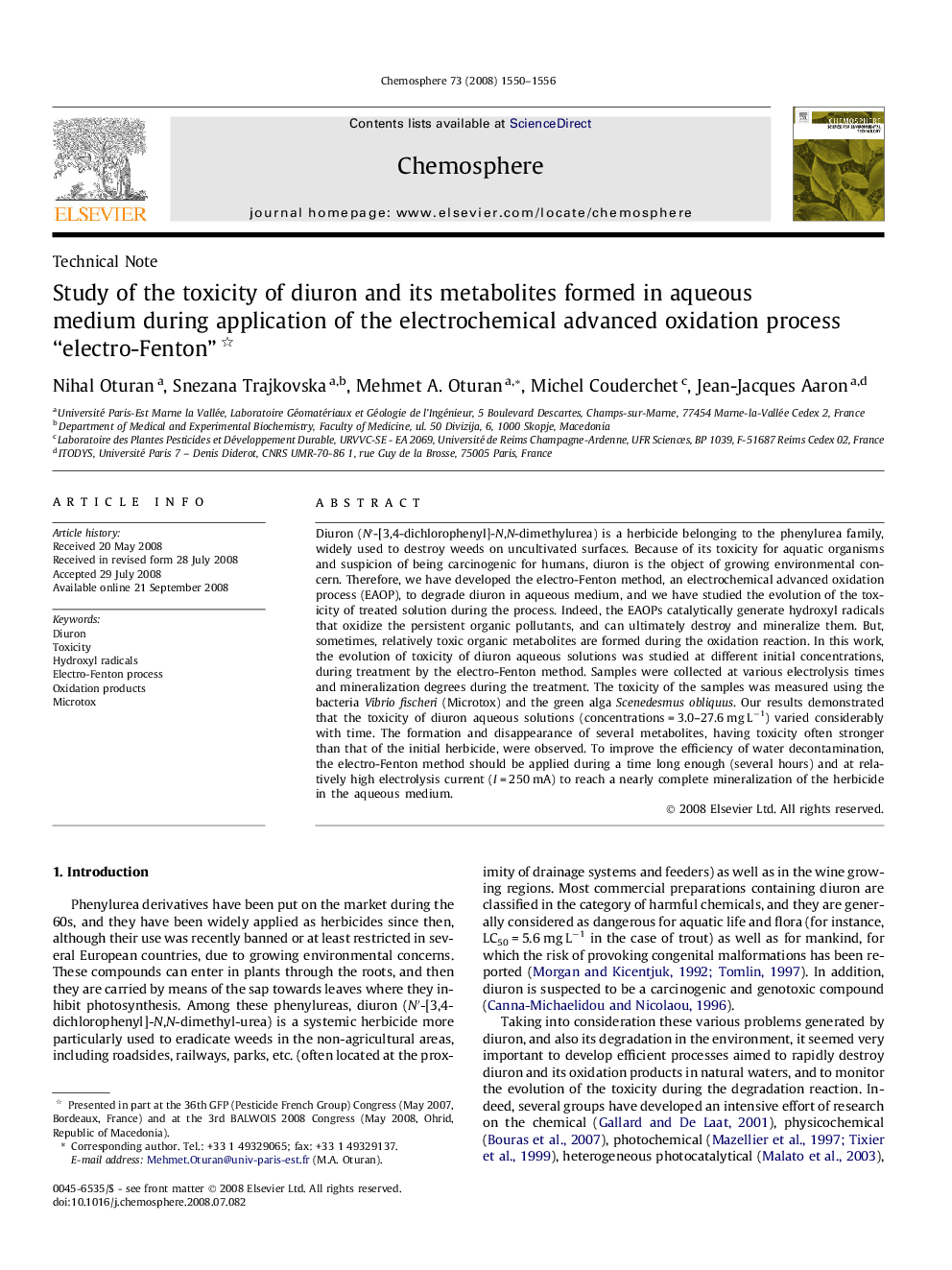| Article ID | Journal | Published Year | Pages | File Type |
|---|---|---|---|---|
| 4412911 | Chemosphere | 2008 | 7 Pages |
Diuron (N′-[3,4-dichlorophenyl]-N,N-dimethylurea) is a herbicide belonging to the phenylurea family, widely used to destroy weeds on uncultivated surfaces. Because of its toxicity for aquatic organisms and suspicion of being carcinogenic for humans, diuron is the object of growing environmental concern. Therefore, we have developed the electro-Fenton method, an electrochemical advanced oxidation process (EAOP), to degrade diuron in aqueous medium, and we have studied the evolution of the toxicity of treated solution during the process. Indeed, the EAOPs catalytically generate hydroxyl radicals that oxidize the persistent organic pollutants, and can ultimately destroy and mineralize them. But, sometimes, relatively toxic organic metabolites are formed during the oxidation reaction. In this work, the evolution of toxicity of diuron aqueous solutions was studied at different initial concentrations, during treatment by the electro-Fenton method. Samples were collected at various electrolysis times and mineralization degrees during the treatment. The toxicity of the samples was measured using the bacteria Vibrio fischeri (Microtox) and the green alga Scenedesmus obliquus. Our results demonstrated that the toxicity of diuron aqueous solutions (concentrations = 3.0–27.6 mg L−1) varied considerably with time. The formation and disappearance of several metabolites, having toxicity often stronger than that of the initial herbicide, were observed. To improve the efficiency of water decontamination, the electro-Fenton method should be applied during a time long enough (several hours) and at relatively high electrolysis current (I = 250 mA) to reach a nearly complete mineralization of the herbicide in the aqueous medium.
